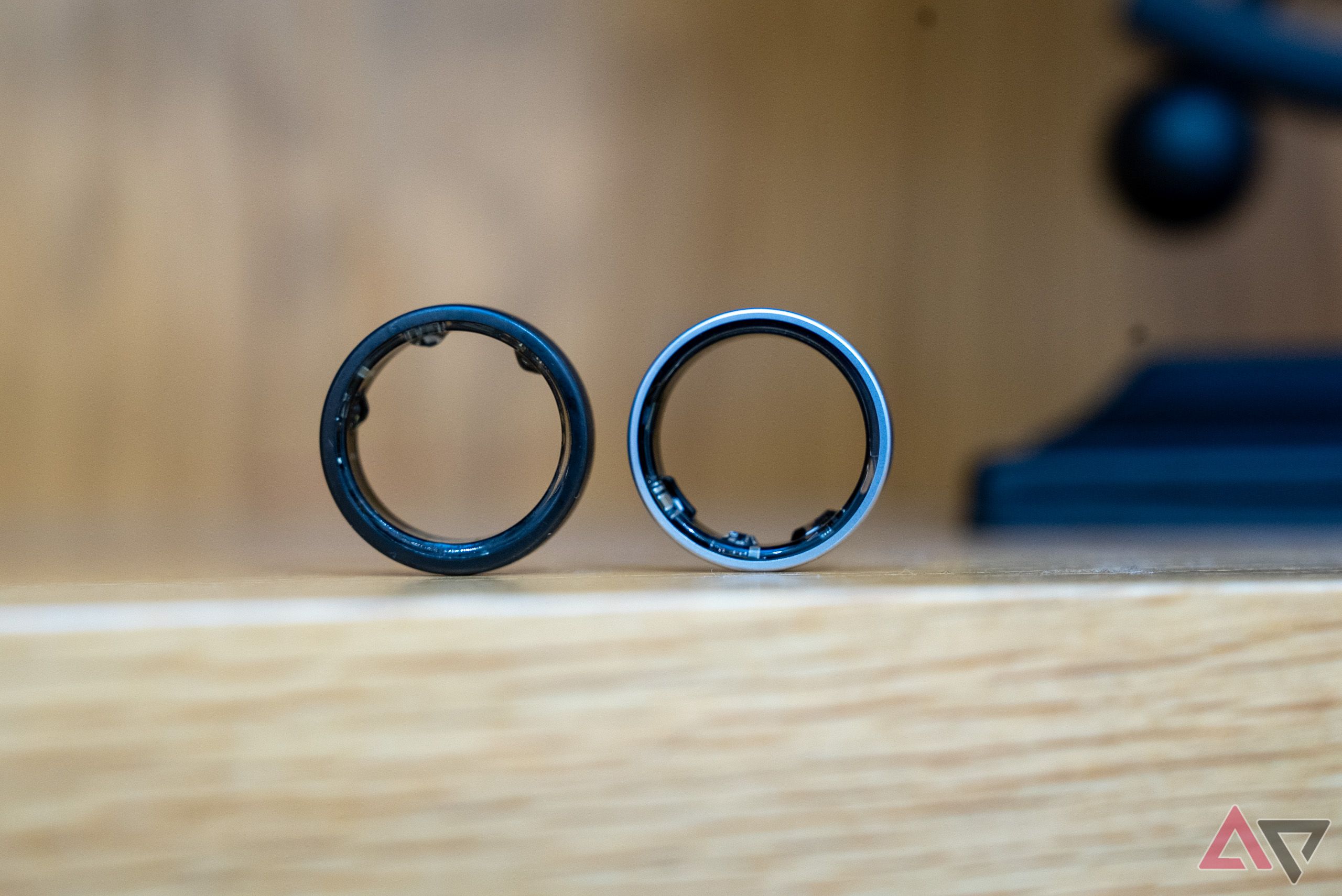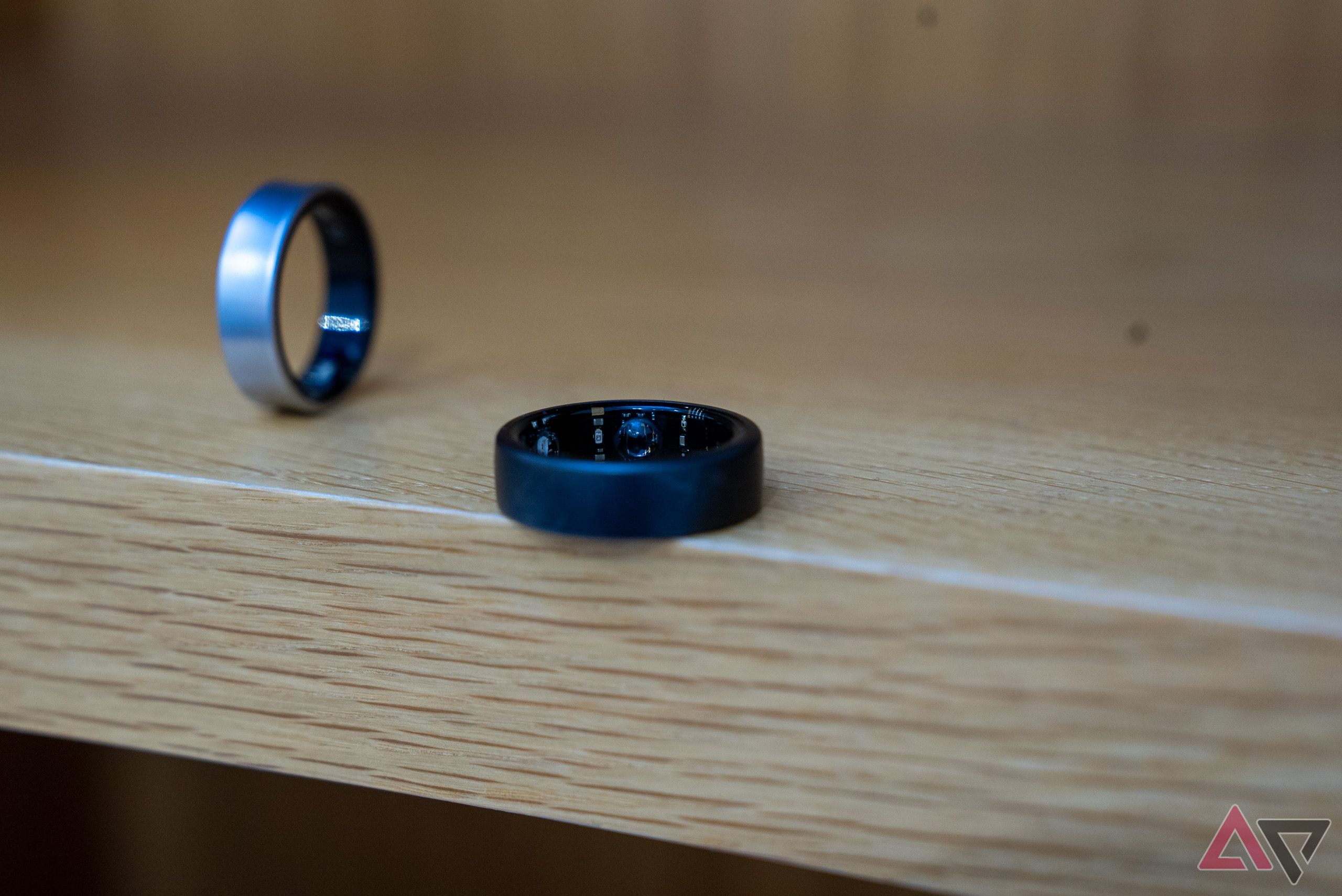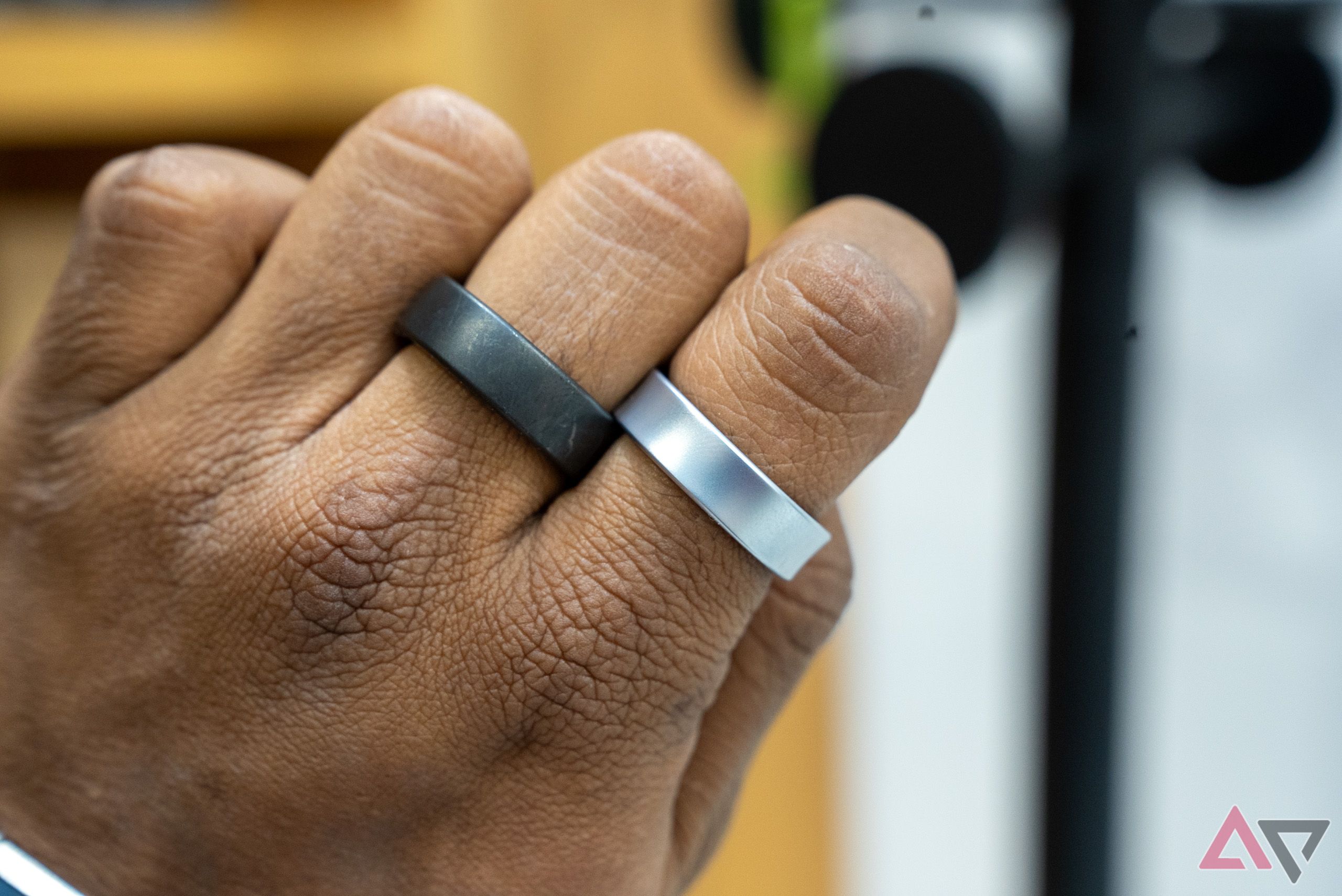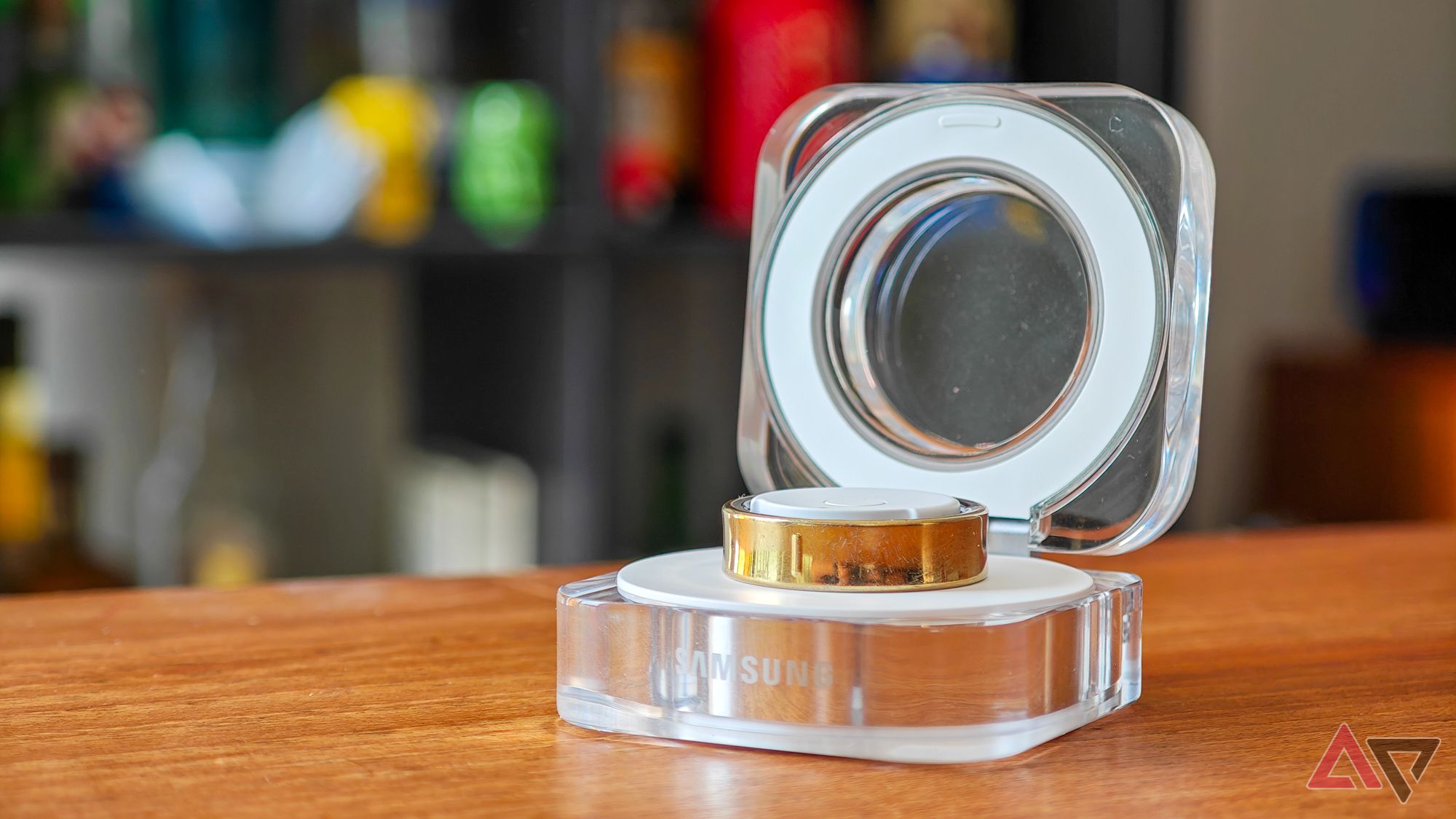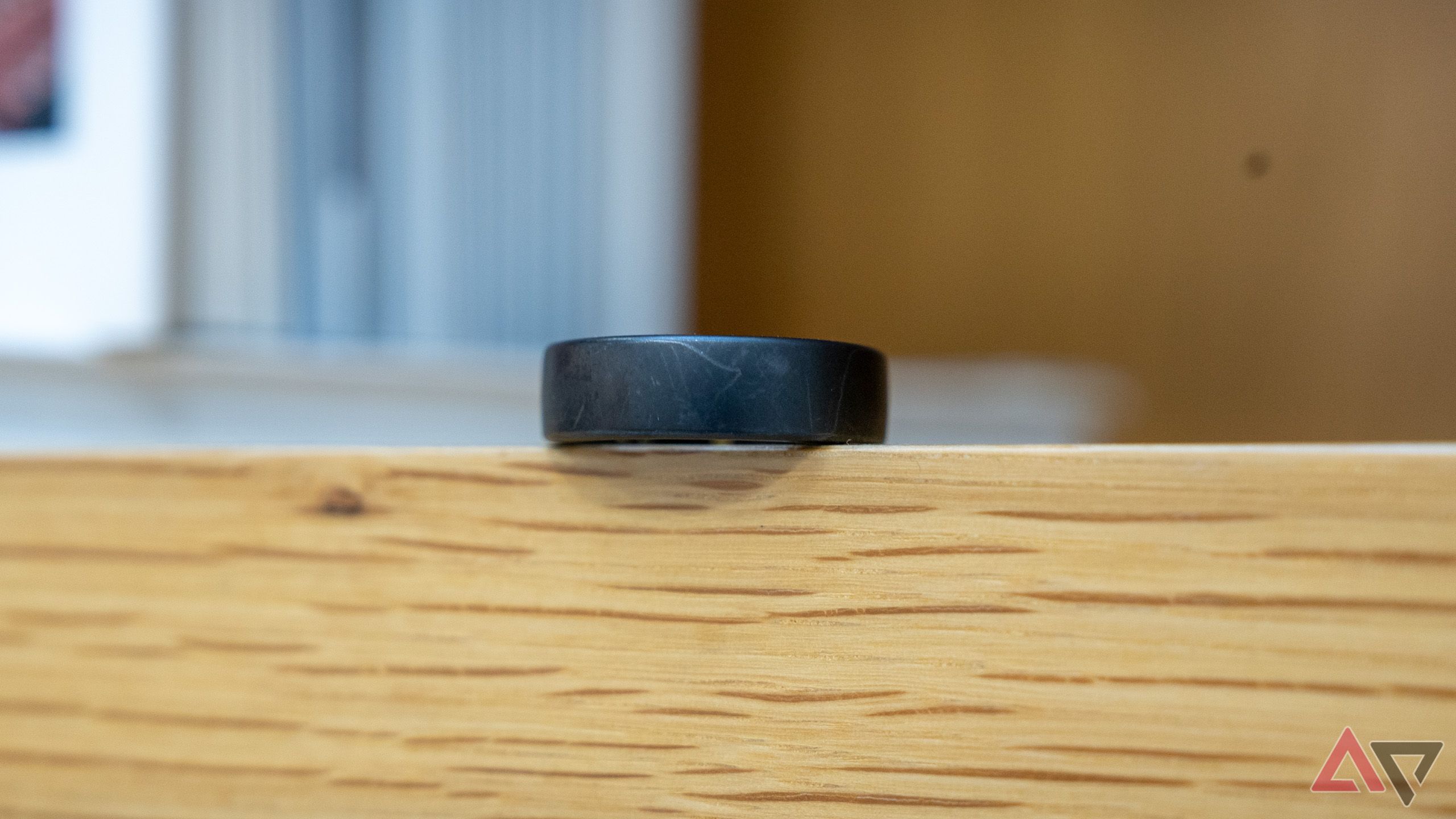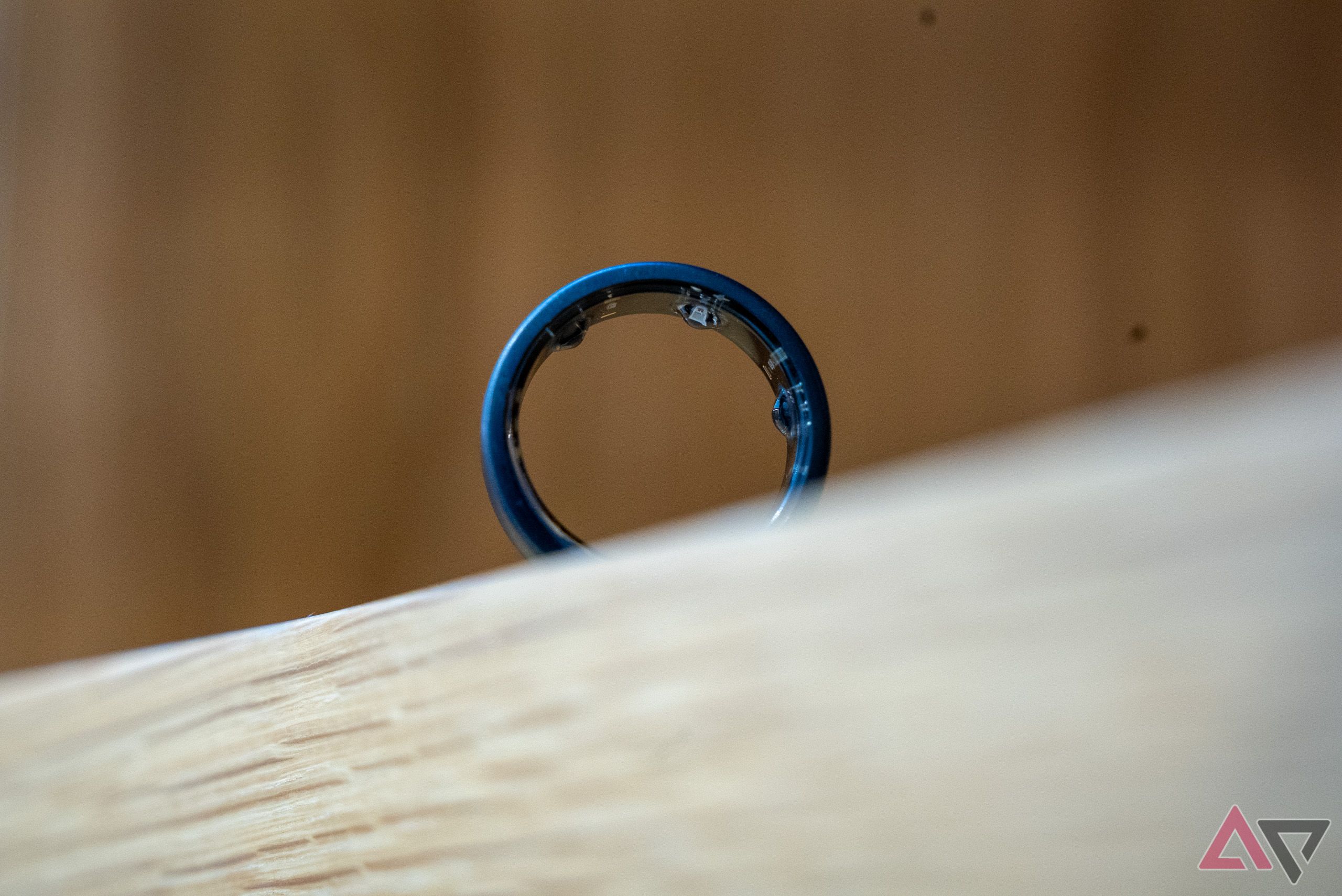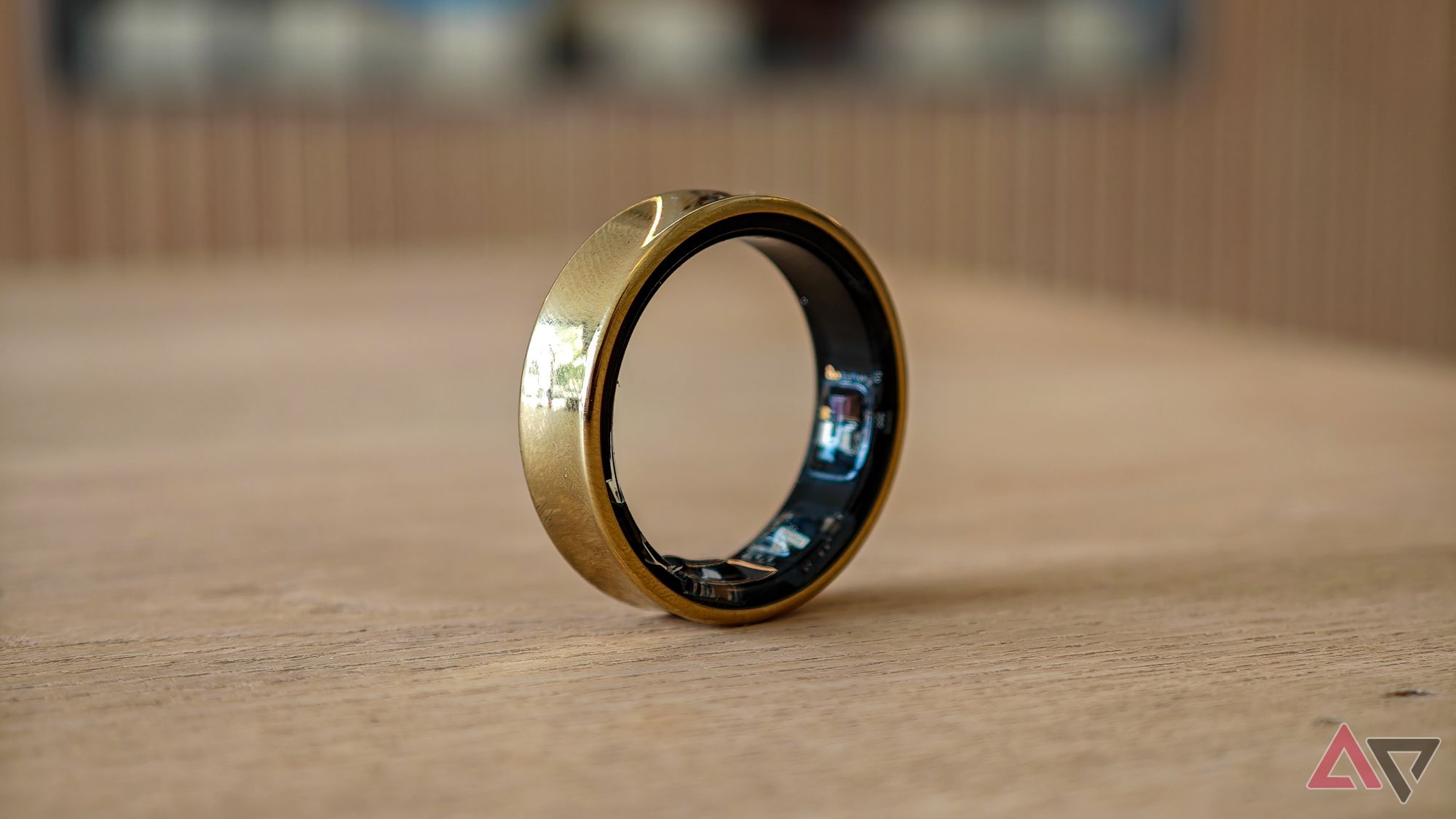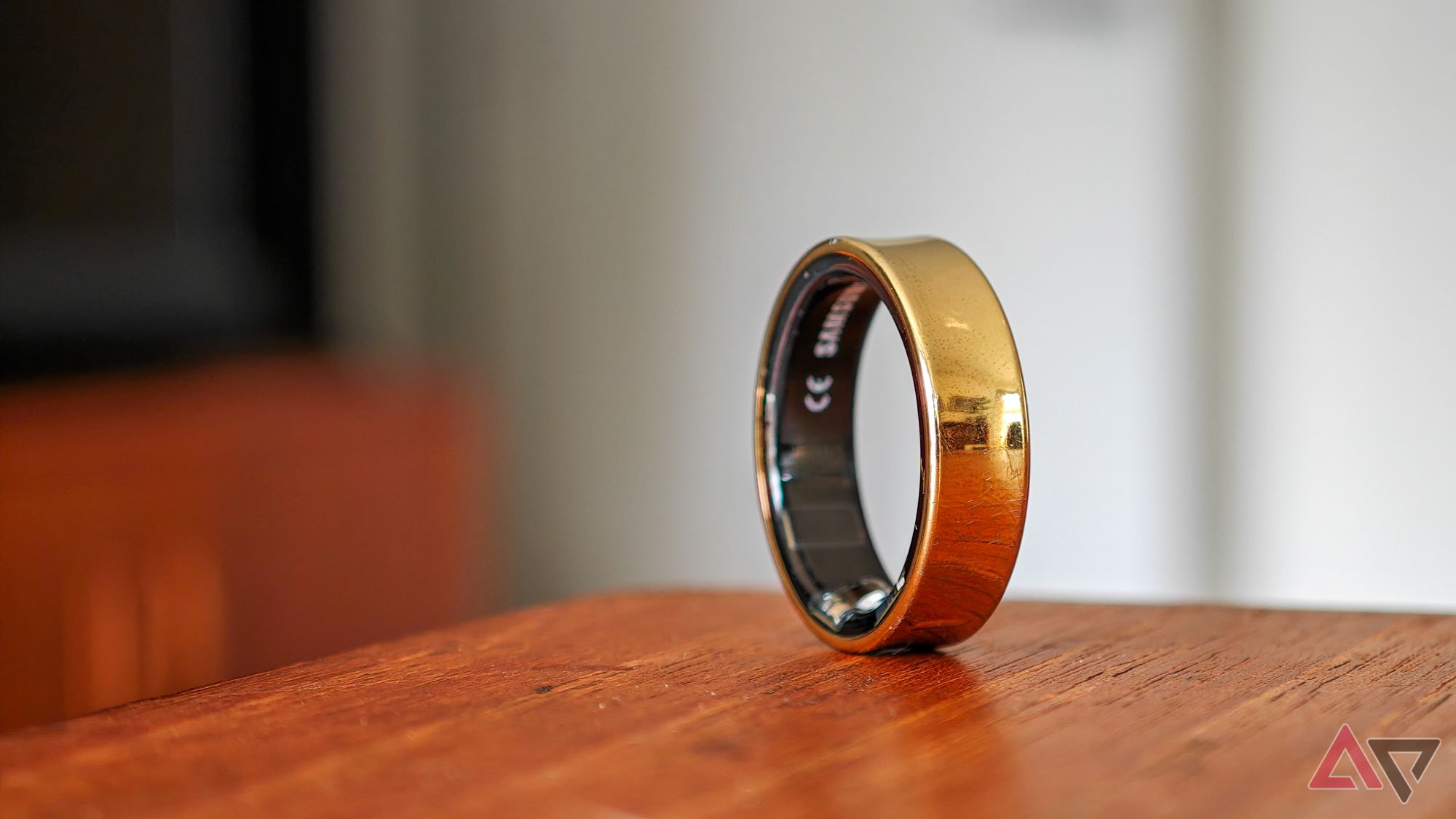-
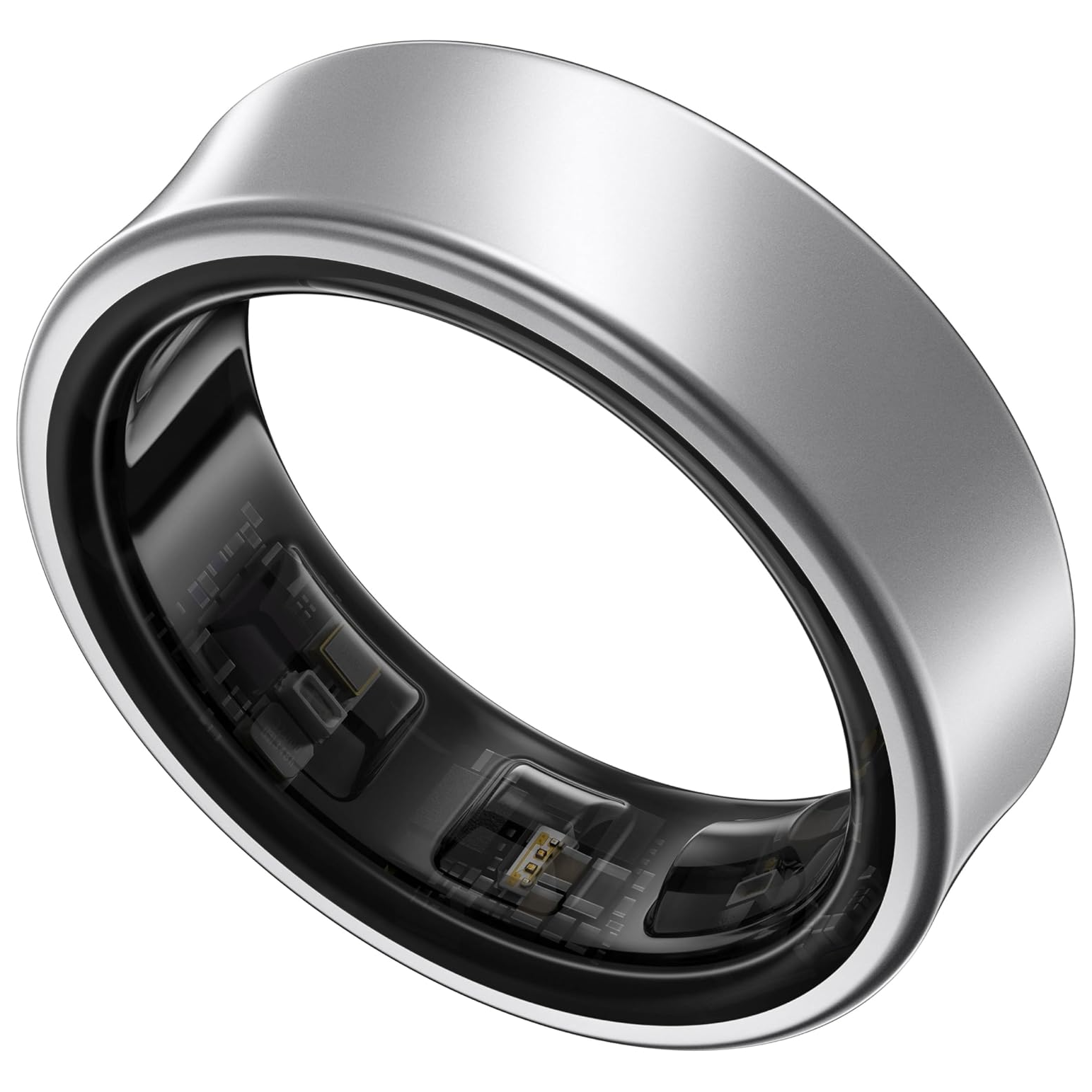
Staff Pick
Samsung Galaxy Ring
It took Samsung three years after the launch of the Oura Ring Gen 3 to launch its smart ring, but the company managed to fix many of the Oura’s problems. The Galaxy Ring is thinner, lighter, much better for swollen fingers, and has fantastic battery life. It’s the best smart ring right now and a blueprint for the next Oura Ring.
Pros- Thinner and lighter
- Excellent 7-day battery life
- Ingenious portable charging case
- No subscription required
- Samsung Health is a fantastic platform
Cons- Not as many styles or design choices
- Only works with Android
- Limited automatic activity tracking
-
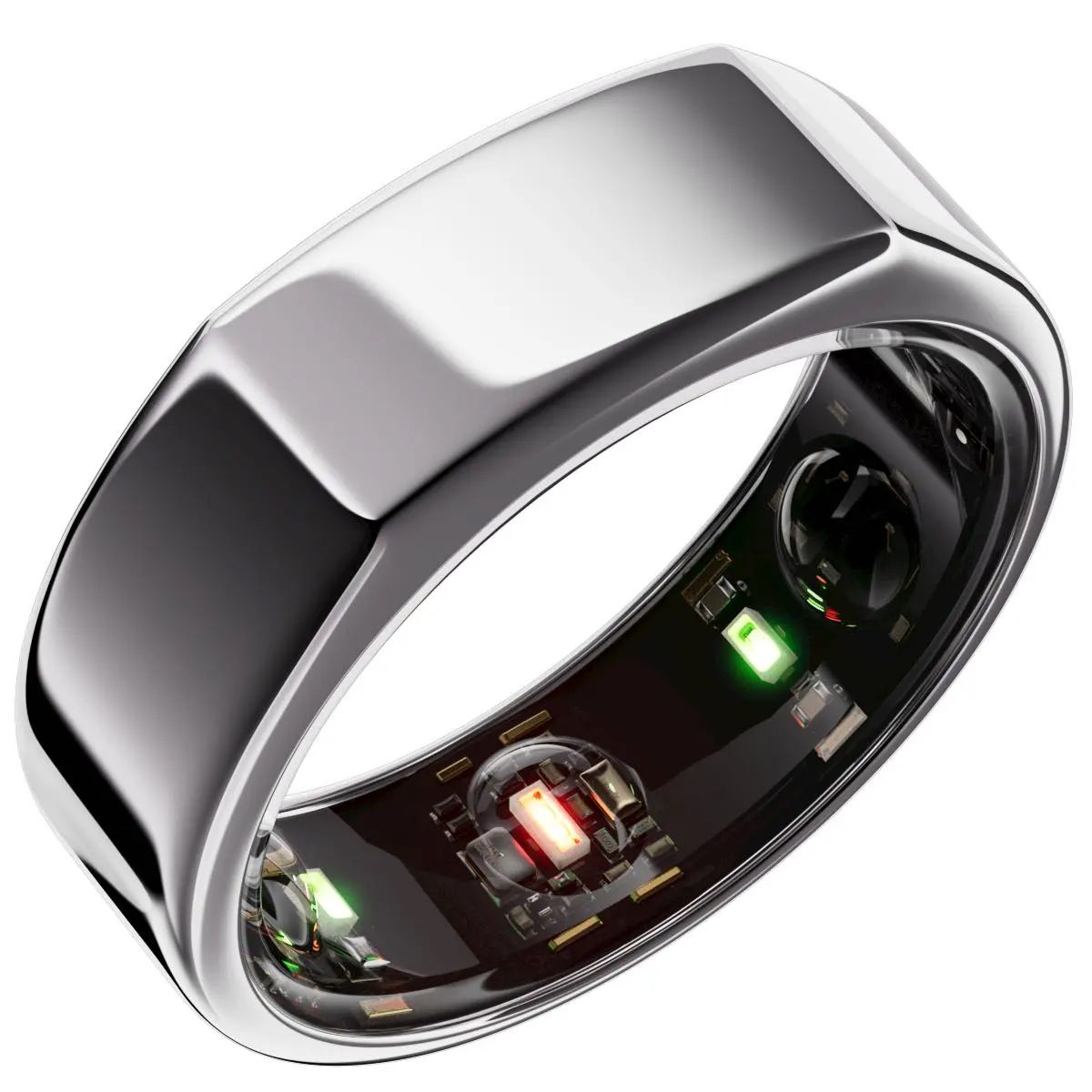
Tried and tested
Oura Ring 3
The tried and tested Oura Ring Gen 3 may be three years old, but it’s still one of the best smart rings you can buy now. Automatic activity tracking for up to 40 activities, detailed sleep reports, and a readiness score are just some features in the Oura app. Unfortunately, many will require an active subscription for $5.99 per month.
Pros- Tried and tested heart rate monitoring
- Prompt-based AI features in testing
- Automatic detection for up to 40 activities
- Detailed sleep reports
Cons- Requires active Oura Membership subscription
- Heavier and thicker than the Galaxy Ring
- Average battery life
When you think of smart rings, Oura usually comes to mind first. But the company now has competition as smart rings become the new smartwatches. From RingConn to the Ultrahuman Ring Air and now the Samsung Galaxy Ring, there are many options for Android users. Should you go for the Oura Ring Gen 3 that’s been solid for three years? Or the Galaxy Ring, which is backed by Samsung’s decade-plus experience in health devices?
It’s complicated. The Oura Ring Gen 3 is tried and tested, but the Galaxy Ring shows what happens when you wait to enter a market. It’s sleek, thin, and light — everything the Oura Ring Gen 3 isn’t. It has a longer battery life and a portable charging case, but it doesn’t work with iOS devices. If you’re an iPhone user, your choice is the Oura Ring Gen 3, but if you use Android, you should consider the Galaxy Ring instead.
Price, availability, and specifications
Cheaper? Perhaps, but not for long
The Galaxy Ring costs $399, which is more expensive than the Oura Ring, which starts at $299. However, this isn’t the most accurate way of looking at it. The Oura Ring Gen 3 requires an Oura Membership for $5.99 per month to get deeper insights and live heart rate tracking, so within 18 months, it becomes more expensive.
The Galaxy Ring has a higher starting price, but requires no subscription or ongoing payments — once you buy it, all the features are yours. That’s not to say there won’t be a subscription in the future, but there are no indications right now that Samsung plans to launch a service akin to Fitbit Premium within Samsung Health.
The Oura Ring comes in two different styles and a range of colors. There’s Heritage, which features a plateau-like design with a straight edge, or Horizon, which is entirely rounded like a band. The latter costs more, but it does come in a range of colors, and the most expensive Oura Ring in Horizon and a Rose Gold finish will cost you $549.
Here’s how the specs of these two smart rings compare:
-
Samsung Galaxy Ring Oura Ring 3 Heart rate monitor Yes Yes Battery life Up to 7 days 4–7 days Sensors Accelerometer; PPG; skin temperature Heart rate, SpO2, skin temperature, IR photoplethysmography, accelerometer Water Resistance IP68; 10 ATM 100m (safe for swimming) Ring sizing 5 – 13 6–13 Color Titanium Black; Titanium Silver; Titanium Gold Silver, Black, Stealth, Gold, Rose Gold Price $399.99 $299 Mobile Payments No No Workout detection Yes (walking and running) Yes
Design
Three years makes all the difference
There is no contest between the design of these two smart rings. Samsung’s first smart ring has learned all the lessons from the Oura and others that came before, and is one of the sleekest smart rings available.
Weighing between 2.3 grams and 3 grams, it’s almost half the weight of the Oura Ring, which weighs between 4 grams and 6 grams. This makes a huge difference in day-to-day comfort, and the Galaxy Ring feels just like a regular ring. You know it’s there, but you can forget about it. The Oura Ring, meanwhile, is far more noticeable, and when you have swollen fingers, it can be very uncomfortable.
Both smart rings house all the sensors inside the ring, but choose different approaches to the outer ring as well. The Oura Ring uses a more conventional convex design and bends slightly outwards, while the Galaxy Ring goes the opposite way and curves inwards like a bowl. As it turns out, the latter provides better protection against scratches, but also reduces the impact when you have swollen fingers.
Meanwhile, the sensors on the Oura Ring are taller and narrower hill-shaped designs, whereas the Galaxy Ring adopts wider and flatter sensor housings. These differences also help the Galaxy Ring feel far more comfortable when your fingers are swollen.
Battery life
Lessons learned by waiting
As part of a longer review of the Galaxy Ring, I’ve been doing some detailed battery testing, and one thing is clear: it’s better than the Oura Ring. Oura rates the Ring’s battery life at seven days, but in the three years I’ve owned it, five and a half days is a more accurate reflection of its true battery life.
In one full test where the Galaxy Ring was partially worn alongside the Galaxy Watch Ultra, the Ring’s battery life came in at eight days and eight hours. If you have a Galaxy Watch, Samsung has confirmed that your Ring battery life should be extended further. In the early part of my test where I wore a Ring and Watch together, the battery life on the Ring was closer to 11 days.
As for charging the rings when their battery depletes, they require different methods. The Oura Ring uses a puck-style charger that you plug a USB-C cable into and place the ring on top of to charge. You can buy replacement chargers from Oura for $60 and a $15 shipping fee, but it’s not the most convenient approach to charging.
The Galaxy Ring takes the alternative approach: charging everywhere. It comes with a portable charging case that can provide up to 1.5x the battery life. In my tests, my smaller size ten ring depleted about 53% of the charging case’s battery, while the biggest size 12 Galaxy Ring depleted 60%. Regardless of the size ring you buy, it will more than double your battery life.
The charging case is the most convenient way to charge any smart ring, and it’s such a great idea that it deserves to be copied. Not only does it charge your ring, but it’s also a great way to store your Galaxy Ring and protect it from damage.
Activities, heart rate, and workouts
Just the basics, or everything and the kitchen sink
The Oura Ring is the better of the two rings when it comes to automatic activity or workout tracking. While the Galaxy Ring only automatically recognizes a walk or run, the Oura Ring will automatically track up to 40 activities and workouts. There’s no contest, and hopefully, Samsung will improve the workouts detected by the Galaxy Ring in the future.
Both rings offer 24/7 heart rate tracking, although this is one of the features locked behind Oura’s membership plan. In my testing against a chest strap monitor — widely considered the gold standard for heart rate tracking — both rings were within three to five beats per minute at rest. This makes them accurate enough to be considered medical grade. During activities, it’s much harder to track heart rate accurately, and the degree of error increased significantly.
The Galaxy Ring also comes with low and high heart rate alerts. When the Ring spots one of these trends, Samsung Health on your phone will send you an alert. During my overarching testing, I found that both smart rings are fairly accurate in their heart rate tracking, but this is by no means a definitive test, as there are many factors that can contribute to this.
Sleep, energy, and other features
All the usual features, plus something unique
I love Samsung’s approach to sleep. I’ve always been a fan of Samsung Health and the way it displays complex sleep metrics, and I’ve seen it resonate with regular customers as well. It’s clear and intuitive, and it explains complex topics related to sleep in a simple and easy way.
The Oura app also generates sleep reports, but the detailed sleep analysis is locked behind the Oura Membership. There are also more insights and features, like period tracking, that are not available on the Galaxy Ring, but all of these necessitate having a subscription. Without an active subscription, the Oura app is limited to basic sleep data and activity information without any detailed information.
The sleep report from both rings is very similar, including metrics such as time in bed, resting heart rate, sleep stages, heart rate variability, and blood oxygen saturation. The Oura app also tracks your lowest heart rate and has a chart that also depicts movement. The Galaxy Ring focuses more on recovery, with percentage indicators for your physical and mental recovery, and also tracks your skin temperature.
Both rings also use your activity, heart rate, and sleep factors to determine how recovered you are. During tests, the Galaxy Ring’s Energy Score and the Oura Ring’s Readiness score were both within a few points of each other, although the Galaxy Ring was usually the higher of the two.
The Galaxy Ring also supports two gestures right now — used to snooze an alarm or act as a remote camera shutter for your phone — but hopefully Samsung expands this feature further.
Which should you buy?
Easy choice if you’re on an iPhone
If you use an iPhone, get the Oura Ring. The Galaxy Ring doesn’t work with iOS, and you’ll need an Android phone to set it up, sync the data, and get all the benefits of Samsung Health. If you use an Android phone, the choice is probably harder.

Samsung Galaxy Ring
The Galaxy Ring may be Samsung’s first foray into smart rings, but it has instantly become the best smart ring you can buy now. Once you consider an excellent feature set, the intuitiveness of Samsung Health, and the superb battery life, you have the best smart ring period.
The Galaxy Ring is my preferred smart ring of these two. The design makes it better for those with swollen fingers, it has excellent sleep reports, and the battery life with the charging case is excellent. It’s so comfortable that I forget it’s on my finger, and it’s shocking how quickly it’s become a permanent part of my life.

Oura Ring 3
The Oura Ring Gen 3 is almost three years old, and the smart ring market has come a long way. It’s still one of the best smart rings right now and the only option for iPhone users. If you’re on Android, wait for the fourth generation to launch later this year, or consider the Galaxy Ring.
The Oura Ring is the better ring for automatic activity detection and has a wider array of design options, but I wouldn’t buy the Oura Ring Gen 3. It’s almost three years old and Oura is expected to launch the fourth generation Oura Ring in the coming months. This will hopefully be thinner, lighter, and more refined, all things the current third generation isn’t when compared to the competition.
Nirave is a creator, evangelist, and founder of House of Tech. A heart attack at 33 inspired him to publish the Impact of Tech newsletter, which covers the best technology and its impact on mental, physical, and emotional health. For more, follow him on Instagram, Twitter, and LinkedIn.
Source link

